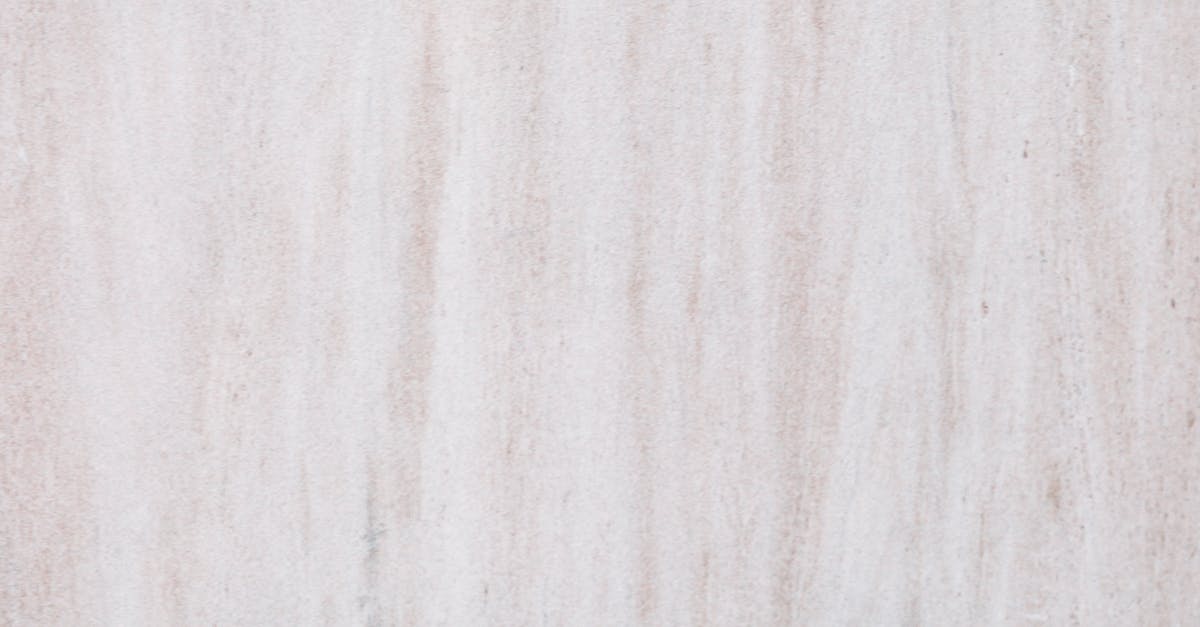
Table Of ContentsHow to Replace Damaged Natural Stone Panels
Maintenance Costs
Granite wall cladding is well-known for its durability and resistance to wear, which significantly reduces the frequency and intensity of maintenance required. Unlike softer materials, granite is less susceptible to stains, scratches, and other forms of damage. Regular cleaning to remove dirt and debris is often the only necessity, using mild soap and water. Sealing the granite at regular intervals is crucial to protect its surface and maintain its appearance. While sealing entails a cost, it is relatively infrequent, typically needed once every few years.
Considering the long-term care for granite walls, the maintenance costs remain largely economical when spread over decades. Unlike some cladding options that require frequent repainting or replacement, granite can endure with minimal intervention. The investment in sealing products and occasional cleaning efforts is negligible compared to other cladding materials that can incur significant upkeep costs. Over time, this results in a favourable financial proposition for homeowners or developers seeking a reliable and aesthetically pleasing solution.
Longterm Care for Granite WallsTerms of Use
Environmental Considerations
The extraction and processing of granite have notable environmental implications. Various factors such as energy consumption, water use, and land disruption come into play during quarrying. Sustainable practices in the industry have gained traction, with some suppliers actively working to minimise their ecological footprint. These initiatives often involve responsible sourcing methods, which can help alleviate concerns regarding habitat destruction and resource depletion.
The transportation of granite also contributes to its environmental footprint. When granite is sourced from distant quarries, the carbon emissions associated with transport can be significant. In contrast, local sourcing reduces the distance materials travel, thereby lowering emissions and supporting local economies. As awareness of these environmental impacts increases, designers and builders are becoming more conscious of sourcing practices and their implications on sustainability when opting for granite wall cladding.Privacy Policy
Sustainability of Granite Sourcing
The sourcing of granite has raised important conversations around environmental impacts. Extraction processes often disrupt local ecosystems, leading to habitat loss and potential biodiversity issues. In addition, the energy-intensive nature of quarrying can contribute significantly to carbon emissions, sparking concerns about the overall sustainability of these practices.
Efforts are being made to mitigate these effects. Companies are increasingly adopting environmentally responsible quarrying techniques. Innovations in machinery and the use of renewable energy sources are becoming more prevalent. Furthermore, some suppliers are focusing on reclaiming and recycling granite, promoting a circular economy. This proactive approach demonstrates a commitment to balancing the demand for granite while minimizing ecological footprints.
Comparative Analysis with Other Cladding Materials
When considering wall cladding options, granite often stands out due to its durability and aesthetic appeal. However, it is essential to compare it with alternative materials such as vinyl, timber, and concrete. Vinyl cladding tends to be more cost-effective upfront, but it does not offer the same longevity or resistance to weathering. Timber, while aesthetically pleasing, requires regular maintenance to prevent decay and insect damage, which can accumulate significant costs over time. In contrast, concrete, while seemingly affordable, may lack the visual warmth of granite and can often lead to increased carbon emissions during production.
CostBenefit Analysis
When considering granite wall cladding, one must evaluate the balance between initial investment and long-term benefits. The upfront costs can be significant due to quarrying, transportation, and installation. However, granite’s durability and lifespan often offset these initial expenses, making it a financially sound choice over the years. Compared to less robust materials, granite resists wear and tear, reducing the frequency and cost of repairs.
Beyond financial factors, aesthetic appeal and property value should also be assessed. Granite’s natural beauty adds a premium look to building exteriors, potentially increasing property values. This visual advantage can be an essential aspect of a building’s marketability. While alternative materials may have lower entry costs, their shorter lifespans and ongoing maintenance needs can lead to higher overall expenses. Evaluating both the tangible and intangible returns on investment is crucial for informed decision-making regarding cladding options.
FAQS
What are the maintenance costs associated with granite wall cladding?
Maintenance costs for granite wall cladding are generally low due to its durability. However, periodic cleaning and sealing may be required to maintain its appearance and prevent staining, which can incur some costs.
How often should granite walls be maintained?
Granite walls typically require minimal maintenance, but it is advisable to inspect and clean them annually. Sealing may be needed every few years, depending on the specific environment and exposure to elements.
Is granite a sustainable choice for wall cladding?
Yes, granite can be considered a sustainable choice if sourced responsibly. Many suppliers focus on sustainable quarrying practices and environmental stewardship, which helps reduce the ecological impact of granite extraction.
How does granite wall cladding compare in cost to other materials?
While granite wall cladding may have a higher initial cost compared to materials like vinyl or aluminium, its longevity and low maintenance requirements often make it more cost-effective over time.
What factors should be considered in a cost-benefit analysis for granite wall cladding?
Key factors include initial material costs, installation expenses, long-term maintenance costs, durability, aesthetic value, and potential for enhancing property value. Evaluating these aspects can help determine whether granite is the right choice for your project.
Related Links
Environmental Impact of Sourcing Granite for Wall CladdingInstallation Tips for Granite Wall Cladding
Common Mistakes to Avoid with Granite Wall Cladding
Design Ideas Featuring Granite Wall Cladding
Maintenance Guide for Granite Wall Cladding
Comparing Polished vs. Honed Granite for Wall Cladding
How to Choose the Right Granite for Your Wall
Top Granite Colors and Patterns for Wall CladdingSitemap